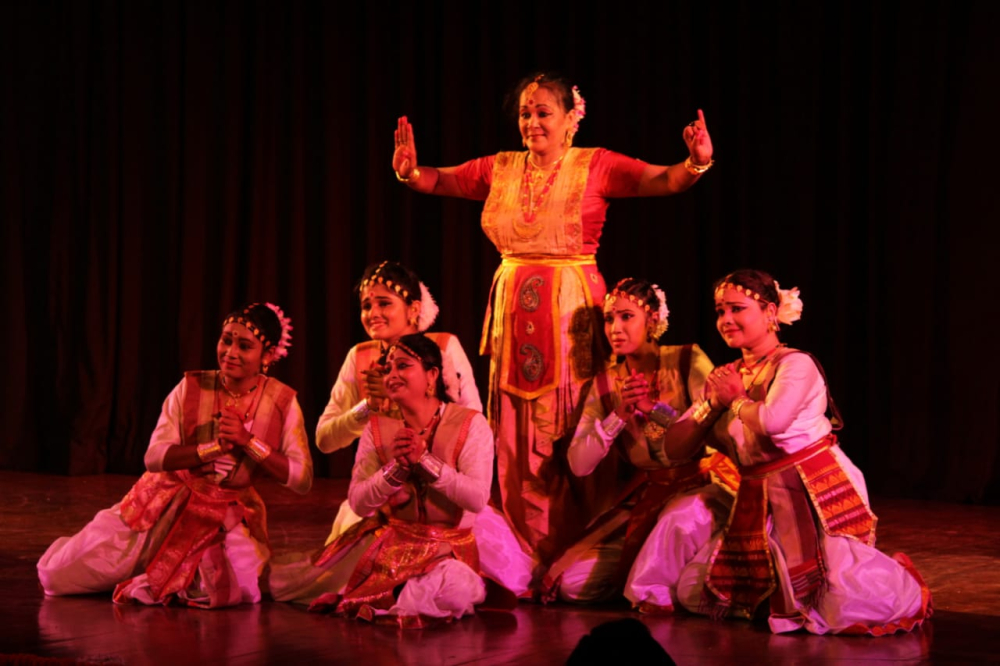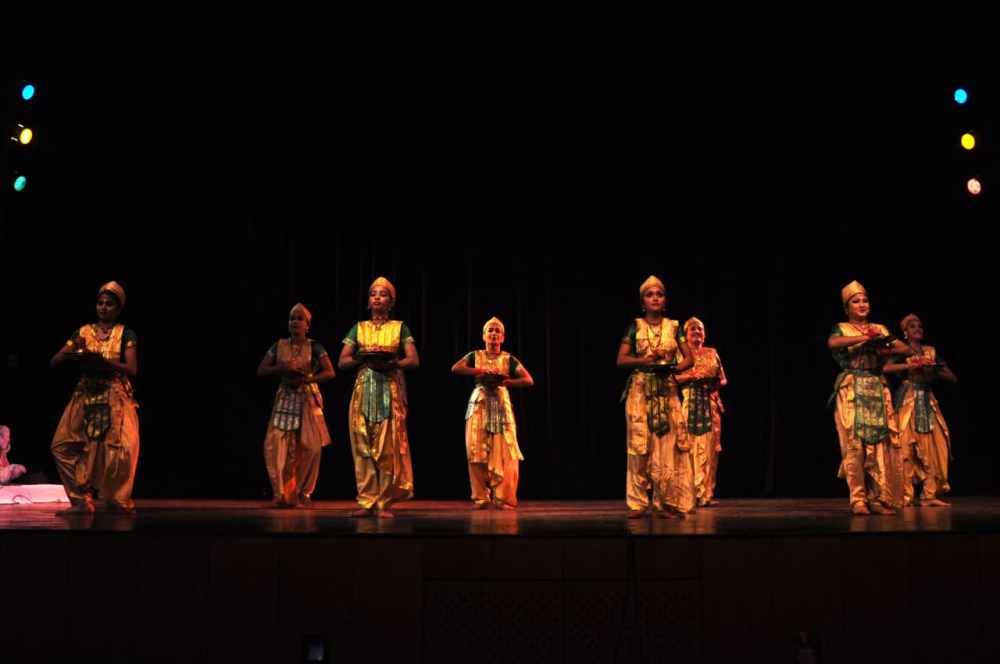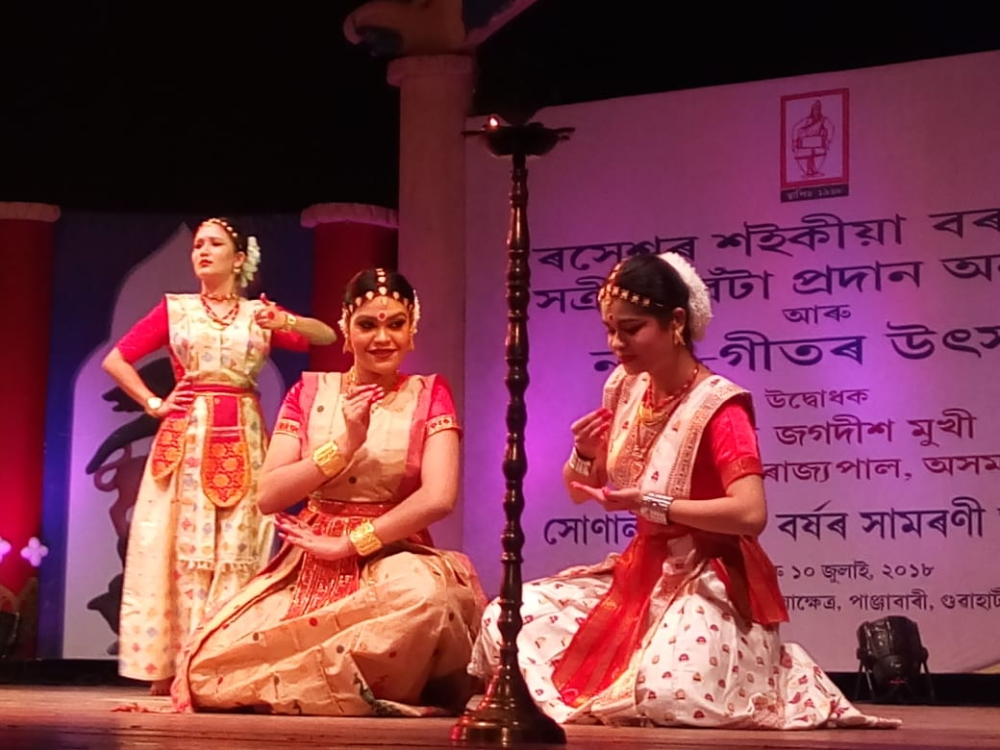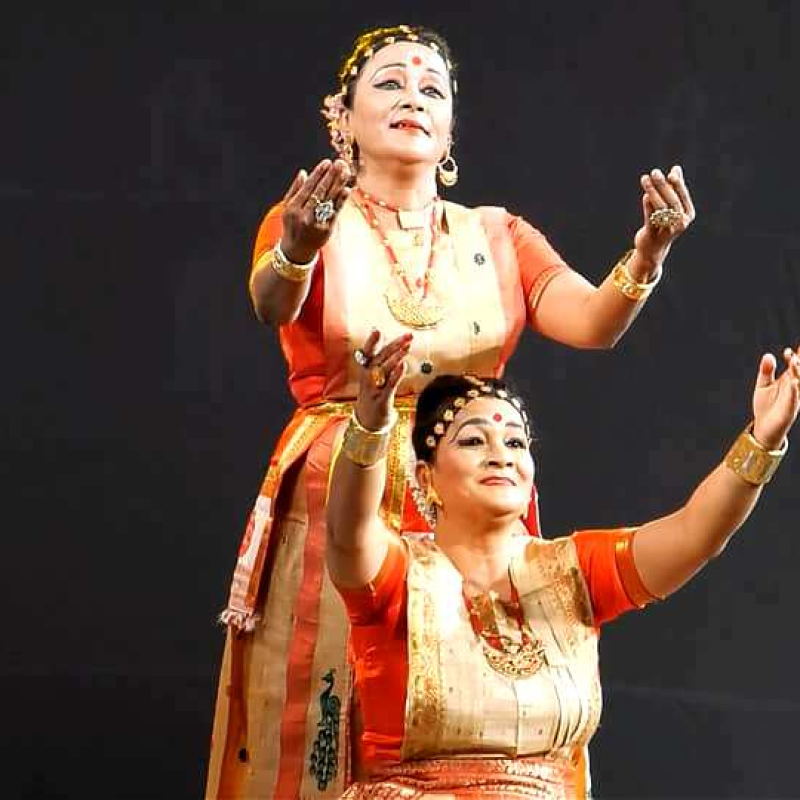Assamese reformers Sankardeva and his disciple Madhavdeva occupy a significant position in the 15th- and 16th-century socioreligious history of Assam. By developing literary and performative forms like Sattriya Nritya, they led the social and cultural renaissance in medieval Assam. (Fig. 1)

The Sattriya tradition—born out of the neo-Vaishnavite Bhakti movement and ushered in by Sankardeva in Assam—was consolidated, pursued and preserved in the sattras (Vaishnavite monasteries) of Assam. It has become synonymous with the cultural idiom of the Assamese people. The notion of bhakti (devotion) associated with Sattriya Nritya played—and continues to play—a complementary role in uniting and enlivening their spirit.
Sattriya Nritya was recognised as one of the eight classical dances of India on November 15, 2000. Its retelling of mythical and religious stories, through hand gestures, footsteps and facial expressions, ensures that religious lore and mythology, in the process, not just become part of this tradition but are integrated in the daily lives and beliefs of sattras where Sattriya Nritya was originally conceived and practised.
Mati akharas (exercises performed on the ground) are the foundation of Sattriya dance. These exercises are designed such that they train the dancers in particular aspects of the dance form. There are 64 mati akharas, which are further subdivided into ora, jhalak, pak, satta, jaap, sitika, lon and khor. Sattriya has two performative styles—paurashik bhangi or purushor naach (masculine style) (Fig. 2) and the stri bhangi or prakritir naach (feminine style). While the former is vigorous, incorporating energetic jumps and acrobatics, the latter comprises lasya, or delicate movements of body and limbs. Purushor naach includes Krishna nritya or Gosain prabeshar naach, lawanu suri nritya, nadhubhangi, sutradhaari naach and geetor naach. Prakritir naach includes sali naach, gopi naach, raasor naach, etc.

Traditionally, Sattriya Nritya was restricted to the precincts of sattra and was performed only by the keuliya bhakats (celibate Vaishnavite monks) as part of their daily ritualistic practices or to mark the festivities of the monastery. However, the dance form is now performed on public platforms by both men and women who need not be inhabitants of sattras. Sattriya performances are mostly based on compositions sourced from the Bhagavata Purana and epics by Sankaradeva and Madhavdeva. They usually tell stories of Radha and Krishna or episodes from Ramayana and Mahabharata.
The costumes used in Sattriya Nritya are of two kinds, related to the masculine and feminine aspects of the dancers. The male costume comprises the dhoti (traditional garment wrapped around hips by men) and paguri (turban), while the female costume consists of the ghuri (skirt), kanchi (waist cloth) and an uroni (customary mantilla worn over the head). Traditionally, these costumes were made of raw silk in white, blue and yellow, depending on the dance performed. As the dance form moved out of the sattras and silk was no longer affordable, velvet and satin became the choice of fabric for attires during public performances. However, since Sattriya’s acceptance as a classic dance form, there has been a reversal to paat (Assamese traditional silk made from silkworm) and muga (the golden silk of Assam).
The motifs on the garments are Assamese heritage designs such as kingkhap, kalka, miri and gasa. Sattriya Nritya also includes play-specific costumes. For example, artists performing Krishna nritya and nadhubhangi nritya wear a yellow and blue dhoti, while artists performing sutradhari nritya, jhumura nritya and most of prakitir naach wear a white-coloured costume. What remains significant in these performances is the convergence of geet (song: borgeet or sloka), badya (instruments: khol, taal and other traditional Assamese musical instruments), nritya (dance) and abhinaya (acting or drama) synthesised by artists with composite expertise through vocal, verbal, spatial and aural patterns. (Fig. 3)

The governing and managerial works of the sattra are conducted under the sattradhikar (head of the sattra). Members of the sattra are further divided into deka adhikar (deputy to the head), bhakats residing in the sattra precincts and the sisya (disciples). Sattras are not merely centres for perpetuating neo-Vaishnavism but also seats of religious learning that function as residential schools under the guidance of the sattradhikar along with other senior monks who take care of the educational, physical and spiritual welfare of the residents. The disciples are put under the tutelage of different monks to learn the disciplines associated with the sattra tradition while they participate in the everyday rituals of the monastery. They receive lessons in Assamese language, Vaishnavite texts, Vedas and Puranas. Apart from the sattradhikar, who is responsible for conferring the learnings to the bhakats, teachers and other functionaries of the sattras, namely the bhagavati and pathak, impart knowledge in the form of religious instructions. The monks are regularly given written exercises not only in the manuscripts but also in translating Sanskrit scriptures and composing their individual original works in Assamese. Upon completion of this rigorous religious training and education in Vaishanava faith and dharma, the disciple-monks are deputed to take part in the sattra activities as teachers and other functionaries. Sankardeva lay great emphasis on association of the bhakats, who are delegated to serve in different provinces of the state to spread the ideas of bhakti.
The ritual of prayer services, naam prasanga, is known to have existed since the time of Madhavdeva. While most of the hymns for daily services are those written by Sankardeva and Madhavdeva, specific hymns written by sattradhikars of particular sattras are also sung as part of daily worship. Prayers and the hymns are not uniform across all sattras. While usually prayer services are held thrice a day—in the morning, at midday and in the evening—there are sattras where they are conducted as many as 14 times a day. Apart from the everyday naam-prasanga, various other congregational prayer services such as pal-nam (pal meaning in succession) and punya-tithi (death anniversary) of saints and apostles of sattras are also held. Even the Sattriya Nritya shaped by Sankardeva was an initiative to spread bhakti through dance-dramas and music. What remains significant is that these religious services are always observed collectively, i.e., in a congregation and with great devotional fervour.
The traditional way of life and its values, once orally transmitted over generations, used ritualistic worship as well as performative practice, with an emphasis on both religious and aesthetic sensibilities. After Sankardeva and Madhavdeva, the mantle of perpetuating the religion as well as other arts fell on the sattras, and they went on to successfully enliven, expand and promote the legacy.













